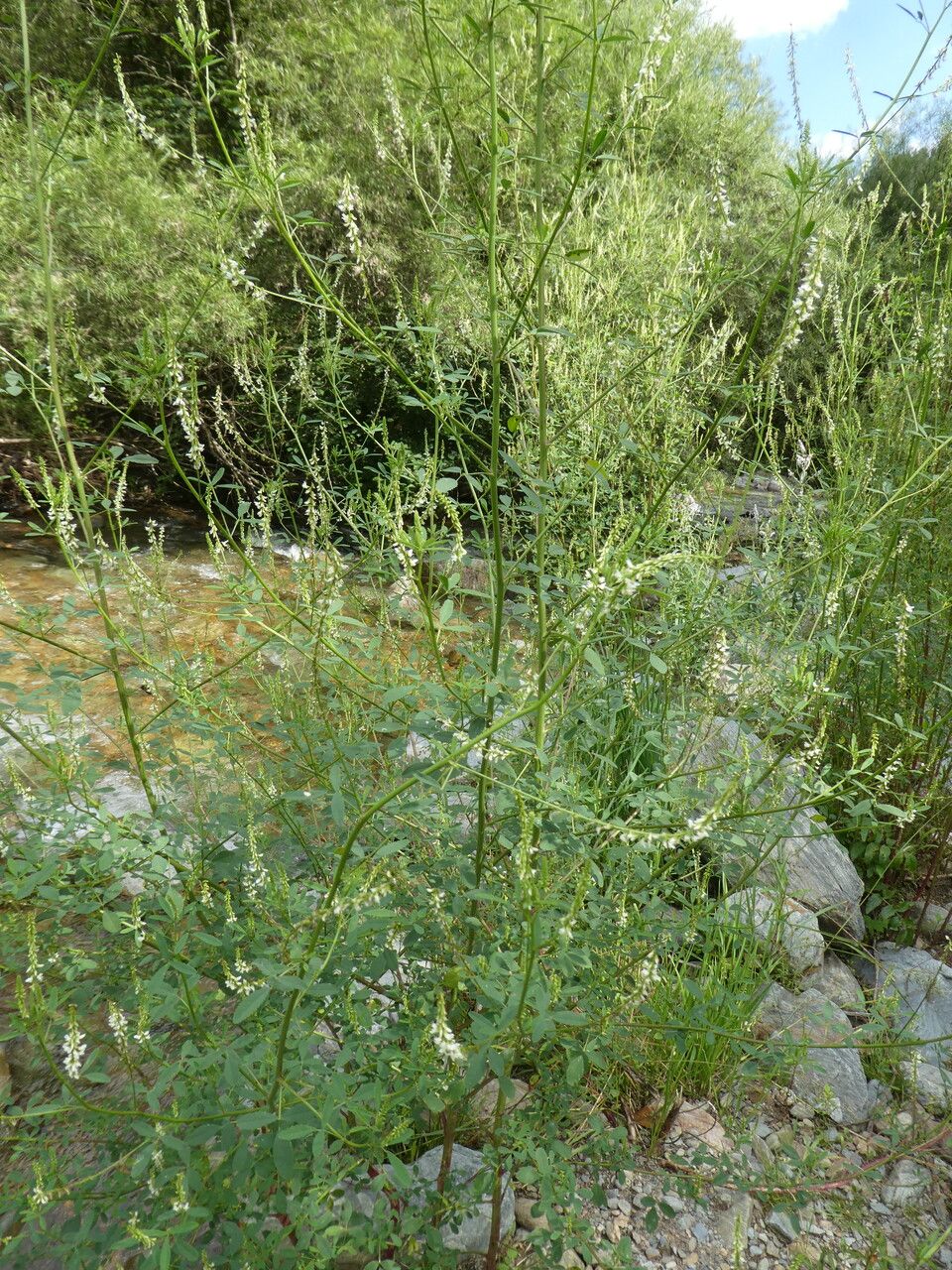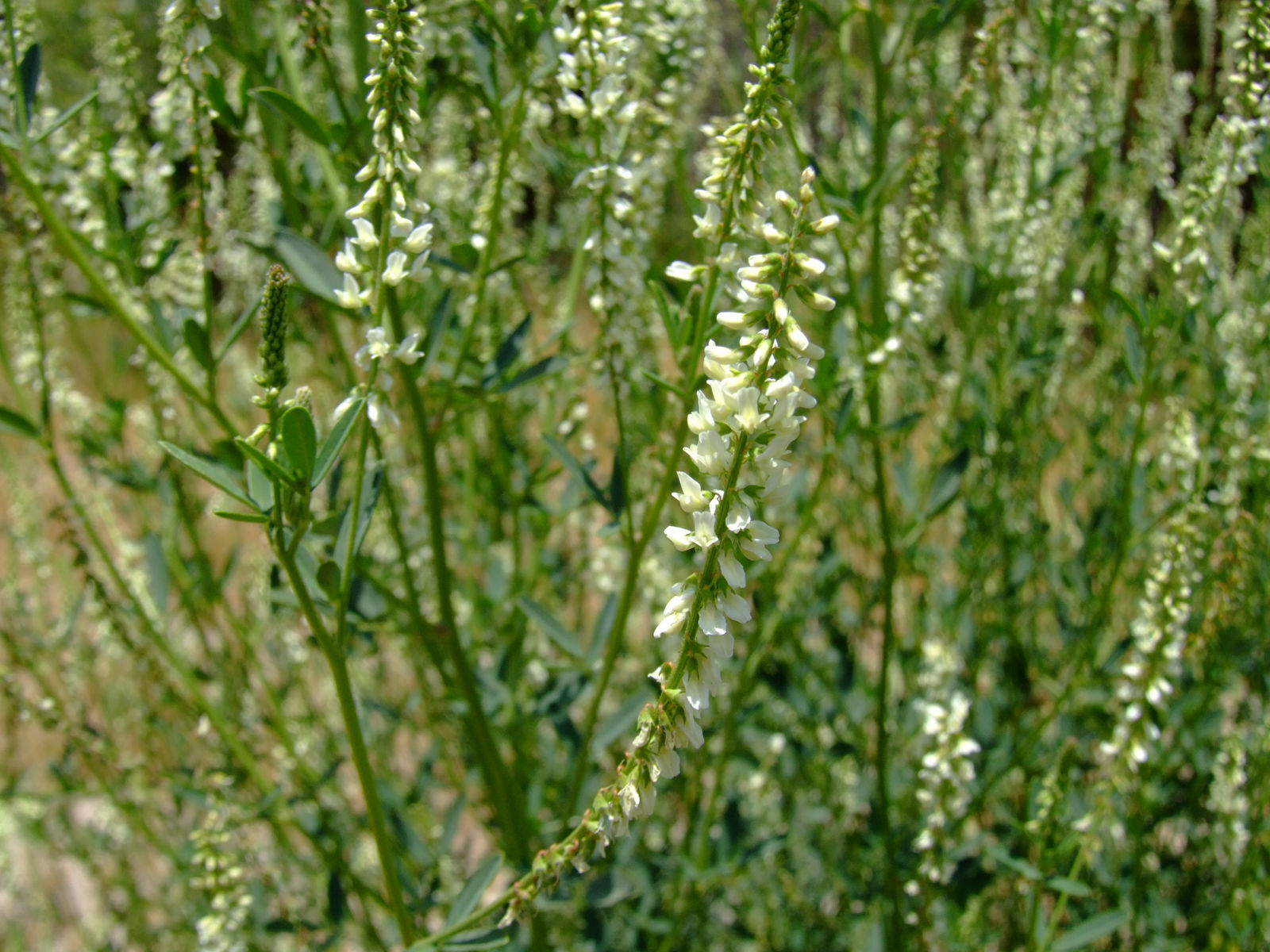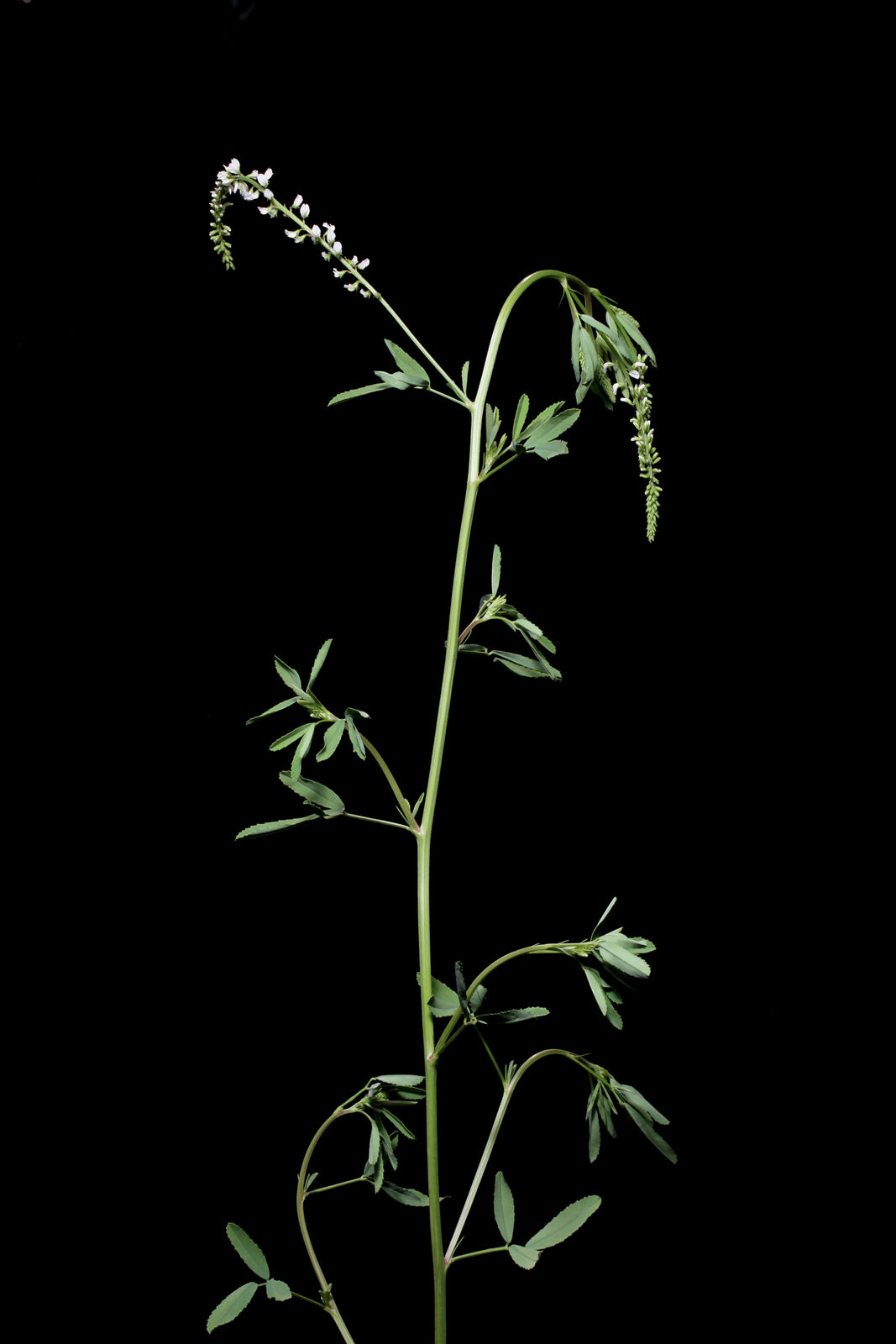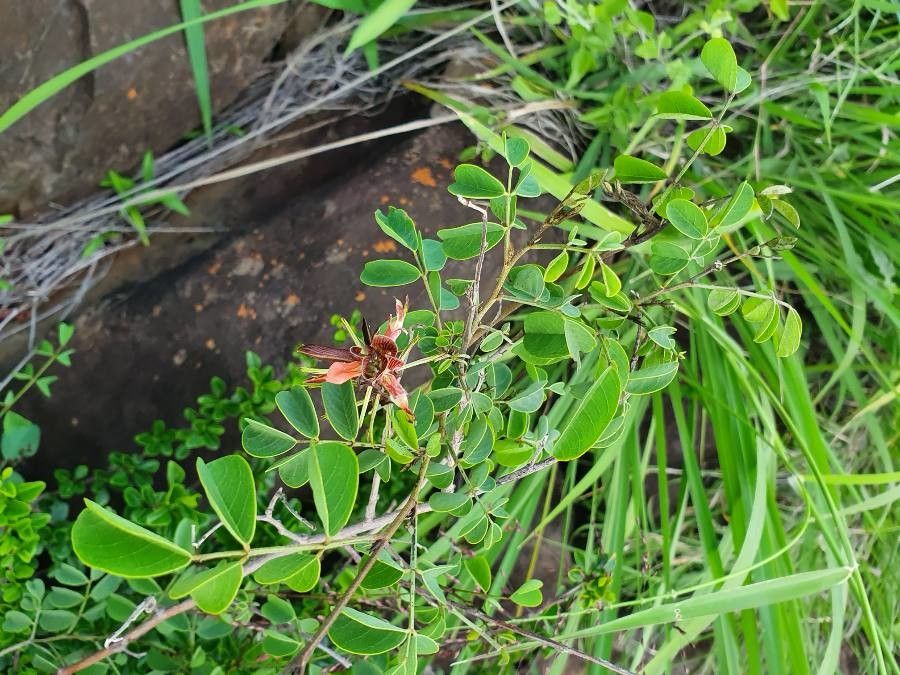White Sweet Clover
melilotus albus
Also known as: ["White Melilot","Sweet Clover"]
Overview
A herbaceous biennial plant in the Fabaceae family, known for its fragrant white flowers and use as a forage crop.
Benefits & Perks
["fragrant flowers","wildlife attractant (bees, butterflies, birds)","drought tolerant"]
Botanical Classification
| Phylum: | Magnoliophyta |
| Class: | Magnoliopsida |
| Order: | Fabales |
| Family: | Fabaceae |
| Genus: | Melilotus |
| Botanical Name: | Melilotus albus |
Plant Characteristics
Basic Information
- Category: Herbs & Weeds
- Suitable Location: garden bed or field
- Suitable For:
- Is Weed: No
- Allergenicity: low
Environmental Needs
- Climate: {"temperatureRange":"5–30°C"}
- Hardiness: {"zones":"4–9"}
- Misting: rarely required
- Drainage: Fast-draining to prevent waterlogging.
- Soil Type: Well-draining, loamy soil with added organic matter.
Maintenance Level
- Maintenance Level: low
- Toughness Level: high
- Pruning Frequency: As needed, typically after flowering or in early spring.
- Pruning Intensity: Light to moderate; avoid heavy pruning unless necessary to control size.
Care Details
Ideal Sunlight Coverage:
Full sun (6–8 hours/day); tolerates partial shade but may produce fewer flowers.
Sunlight Tolerance Tips:
Acclimate plants gradually to intense sunlight; protect from harsh afternoon sun in hot climates; ensure adequate airflow to prevent fungal issues.
Care Requirements
Care Difficulty
easyeasy
Sunlight
full sun
Rotate plants for even light exposure; use shade cloth in extreme heat; avoid placing near reflective surfaces that intensify light.
Watering
every 7–10 days during active growth, reduce in winter
Water thoroughly but infrequently; ensure good drainage; avoid wetting foliage.
Soil
well-drained, loamy soil
pH: Slightly alkaline to neutral (pH 6.5–7.5).
Ensure pots have drainage holes; avoid compacted soil; use mulch to retain moisture.
Temperature
Prefers 60–75°F (15–24°C); tolerates cooler temperatures but may struggle above 85°F (29°C).
Avoid sudden temperature changes; protect from drafts; maintain consistent indoor temperatures.
Fertilizing
every 4–6 weeks during growing season
Apply fertilizer to moist soil to prevent root burn; flush soil occasionally to prevent salt buildup; stop fertilizing before flowering for better blooms.
Propagation
Methods
Seed or stem cuttings.
Step-by-Step Propagation Guide
- Take cuttings or collect seeds.
- Prepare medium.
- Plant cuttings or sow seeds.
- Maintain humidity.
- Transplant when rooted.
Best Time: Spring or early summer for cuttings; seeds can be sown in spring or fall.
Environment
Warm, humid environment with indirect light; maintain consistent moisture.
Medium
Well-draining potting mix or perlite and peat moss mix for cuttings.
Hormone
Optional but recommended for stem cuttings to encourage rooting.
Timeline
Seeds germinate in 1–3 weeks; cuttings root in 2–4 weeks and establish in 2–3 months.
Tools Needed
Pruning shears, rooting hormone, pots, well-draining medium, misting spray bottle.
Quick Tips
Use sterile tools to prevent disease; keep cuttings out of direct sun; maintain consistent moisture.
Pruning & Repotting
Pruning Guide
Method
Pinch back tips to encourage branching; trim back leggy stems to promote compact growth.
Pruning Plan
Light pruning to maintain shape and encourage bushier growth; remove dead or diseased stems as needed.
Tools
Pruning shears, clean scissors, gloves.
Checklist
Clean tools; remove dead/diseased growth; prune to shape; avoid over-pruning.
Repotting Guide
Best Season
Early spring before new growth begins.
Pot Size
One size larger pot; ensure good drainage holes.
Method
Remove plant gently; trim roots if necessary; place in new pot with fresh soil; water lightly.
Suggestions
Repot every 2–3 years or when roots fill the pot; beneficial for container-grown plants to refresh soil.
Checklist
Choose appropriate pot size; prepare fresh soil mix; handle roots carefully; water after repotting.
Advanced Care Tips
Watering Mastery
Watering Checklist
Check soil moisture; water deeply; ensure drainage; avoid wetting leaves.
How to Apply Water Properly
Water at the base of the plant, ensuring moisture reaches the root zone; allow excess water to drain away; water early in the day to minimize evaporation.
Watering Schedule Tips
Water deeply once the top inch of soil is dry; reduce frequency in winter to prevent root rot.
Soil Improvement
Add compost or well-rotted manure for fertility; mix in perlite or sand for drainage; avoid heavy clay soils.
Temperature Stress Management
Signs of Temperature Issues
Wilting, yellowing leaves, stunted growth, or flower drop in extreme heat; browning leaf edges in cold stress.
Cold Stress
Slows growth, may cause leaf drop, and can lead to root damage in freezing conditions.
Solution: Provide frost protection in winter; avoid overwatering in cold weather; use mulch to insulate roots.
Hot Stress
Leaves may scorch, wilt, or drop; flowering may be reduced.
Solution: Provide afternoon shade; increase watering frequency; use mulch to retain soil moisture.
Fertilizing Guide
Fertilizing Checklist
Use diluted fertilizer; apply during growing season; avoid winter feeding; flush soil periodically.
Fertilizing Method
Use a balanced, water-soluble fertilizer diluted to half strength every 4–6 weeks during growing season; avoid fertilizing in winter.
Common Problems & Solutions
Toxicity Warning
Cats
ToxicCats are highly sensitive to coumarin derivatives, which can cause severe anticoagulant poisoning and internal bleeding. Even small amounts may be hazardous.
⚠️ Symptoms:
🌿 Toxic Parts:
⚡ Toxic If:
if eaten
Dogs
ToxicSimilar to humans, dogs are susceptible to coumarin derivatives in Melilotus albus, which can lead to anticoagulant poisoning and hemorrhagic disorders. The toxicity is dose-dependent.
⚠️ Symptoms:
🌿 Toxic Parts:
⚡ Toxic If:
if eaten
Humans
ToxicMelilotus albus contains coumarin derivatives, which can metabolize into dicoumarol, an anticoagulant that inhibits vitamin K-dependent clotting factors, leading to hemorrhagic disorders. Prolonged ingestion may cause chronic toxicity.
⚠️ Symptoms:
🌿 Toxic Parts:
⚡ Toxic If:
if eaten
Frequently Asked Questions
Q: Is Melilotus albus toxic to pets?
A: It is mildly toxic to dogs and cats.
Q: Does White Sweet Clover attract wildlife?
A: Yes, it attracts bees, butterflies, and birds.
Q: Is Melilotus albus easy to grow?
A: Yes, it is an easy plant to grow with low maintenance requirements.
Quick Reference
| Family: | Fabaceae |
| Care: | easy |
| Light: | full sun |
| Water: | every 7–10 days during activ |
Get Expert Care Tips
Download the Plantious app for personalized care reminders and plant identification!
Google Play App Store








